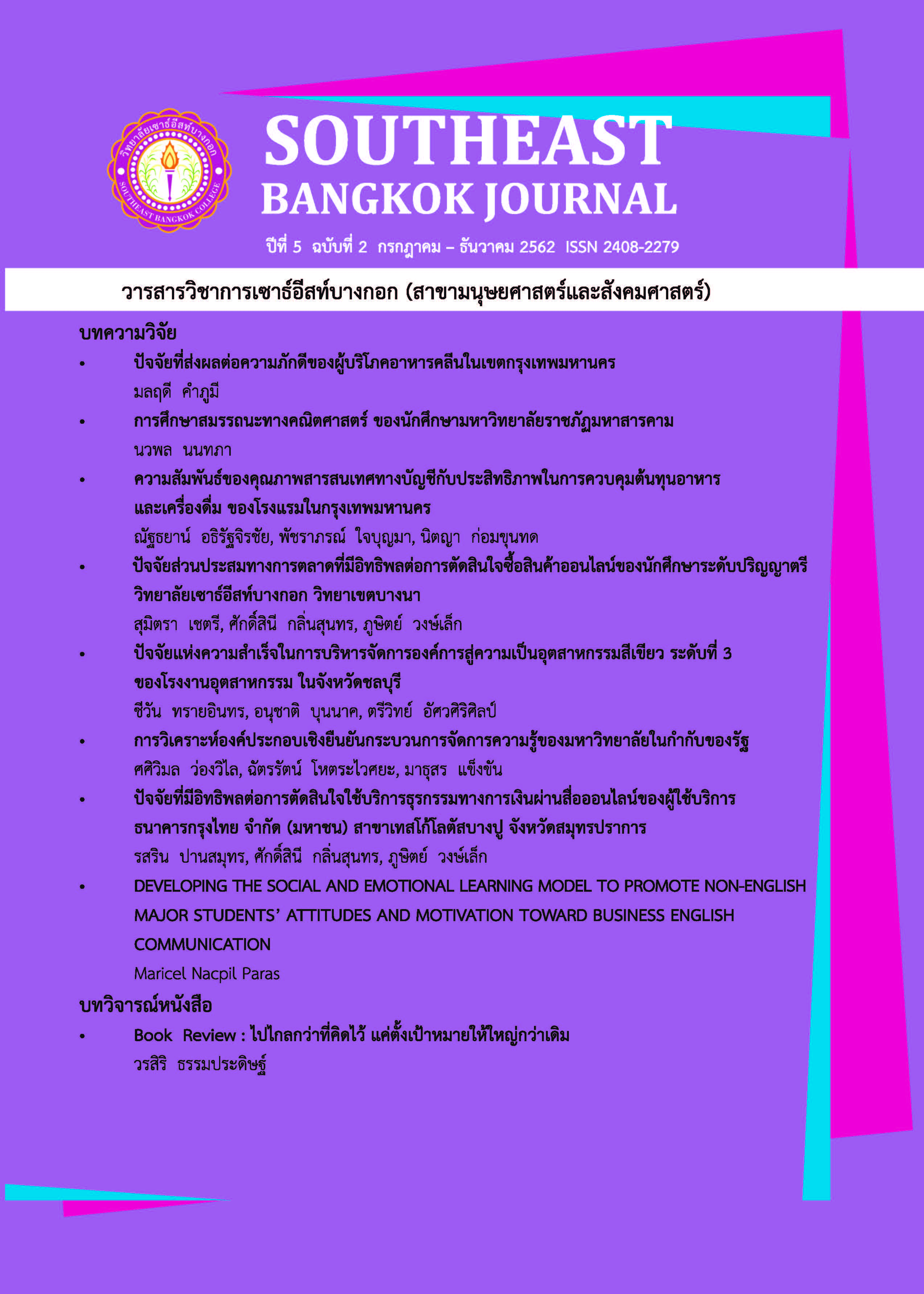A STUDY OF MATHEMATICAL COMPETENCIES OF RAJABHAT MAHASARAKHAM UNIVERSITY STUDENTS
Main Article Content
Abstract
This research aimed to study mathematical competencies of Rajabhat Mahasarakham University students. In this research, the sample groups were students in mathematics program, Faculty of Education, Rajabhat Mahasarakham University, consisting of twenty-five-third year and twenty-five-fourth- students studying in the second semester of the academic year 2017. There were 50 students in totally. The research instruments for data collection in this study were mathematical competency test which consisted of 7 subjective test items that characterized 7 mathematical competencies, and a semi – structured interview. Data were analyzed by using protocol analysis, task analysis, and analytical description of mathematical competency forms.
The results revealed that the students categorized by the most distinguished mathematical competencies of students, and in order of the ability to use mathematical competencies from the highest to the lowest, the highest mathematical competency used was the seventh competency of using symbolic and language and operation, followed by the 5th competency of problem posing and solving, the 1st competency of thinking and reasoning, the 6th competency of representation, the 3rd competency of communication, the 8th competency of using aids and tools, and the 4th competency of modeling, respectively.
Article Details
References
จิตรา ทองเกิด. (2542). กิจกรรมที่จัดในโรงเรียน. วารสารวิชาการ, 10(3).
ทิศนา แขมมณี. (2547). ศาสตร์การสอน. กรุงเทพ ฯ: ด่านสุทธาการพิมพ์.
ไพศาล วรคำ. (2554). การวิจัยทางการศึกษา Educational Research. มหาสารคาม: ตักสิลาการพิมพ์.
สถาบันทดสอบทางการศึกษาแห่งชาติ. (2556). รายงานประจำปี 2556. กรุงเทพฯ: สถาบัน.
สถาบันส่งเสริมการสอนวิทยาศาสตร์และเทคโนโลยี. (2550). ทักษะ/กระบวนการทางคณิตศาสตร์. กรุงเทพ ฯ: สถาบันส่งเสริมการสอนวิทยาศาสตร์และเทคโนโลยี (สสวท.).
สถาบันส่งเสริมการสอนวิทยาศาสตร์และเทคโนโลยี. (2553). รายงานผลการวิเคราะห์ข้อมูลเบื้องต้น: โครงการ PISA 2009. กรุงเทพ ฯ: อรุณการพิมพ์.
สถาบันส่งเสริมการสอนวิทยาศาสตร์และเทคโนโลยี. (2554). ผลการประเมิน PISA 2009 การอ่าน คณิตศาสตร์ และวิทยาศาสตร์. กรุงเทพ ฯ: อรุณการพิมพ์.
สถาบันส่งเสริมการสอนวิทยาศาสตร์และเทคโนโลยี โครงการ PISA ประเทศไทย. (2557). ตัวอย่างการประเมินผลนานาชาติ PISA คณิตศาสตร์. กรุงเทพฯ: อรุณการพิมพ์.
Cai, J. & Lester Jr., F. K. (2005). Solution representations and pedagogical representations in Chinese and U.S. Classrooms. Journal of Mathematical Behavior, (24).
Capraro, M. & Joffrion, H. (2006). Algebraic equations : Can middle school students meaningfully translate from words to mathematical symbols?. Reading Psychology, 27(2), 147-164.
Emori, H. (2005). The Workshop for young mathematics educations in Thailand 2005 building up the research agenda for the next 10 year, 2006 -2015. Khon Kean: Khon Kean University.
Fennema, E. & Franke, M. (1992). Teacher’s knowledge and its impact. In D. A. Grouws (Ed.), Handbook of Research on Mathematics Teaching and Learning. New York: Macmillan Publishing.
Healy, L. & Hoyles, C. (1999). Visual and symbolic reasoning in mathematics: Making connections with computers?. Mathematical Thinking and Learning, 1(1), 59-84.
Hodgson, T. (1995). Secondary mathematical modeling issues and challenges. School Science and Mathematics, 95(7).
Linchevski, L. & Herscovics, N. (1996). Crossing the cognitive gap between arithmetic and algebra : Operating on the unknown in the context of equations. Educational Studies in Mathematics, 30(1).
Movshovitz-Hadar, N., Zaslavsky, O. & Inbar, S. (1987). An Empirical classification model for errors in high school mathematics. Journal for Research in Mathematics Education, 18(1), 3-14.
Sallis, E. & Jones, G. (2002). Knowledge management in education : Enhancing learning and education. London: Kogan Page.
Stein, S. (2001). Equipped for the future, content standards. Washington, DC: National Institute for Literacy.


